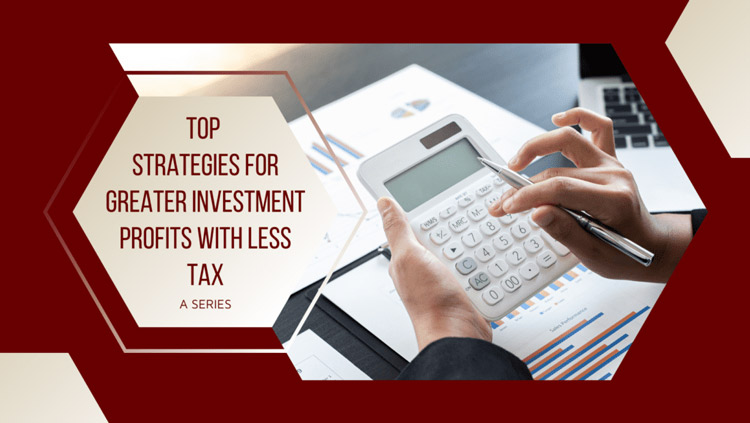Welcome to our new blog series! We are excited to talk to you about ways you can increase your investment profits by lowering your taxes. Please let us know if you have any questions about the series over the coming weeks.
In this country, we are afforded many freedoms. However, one thing we are not free from is taxes. The government collects taxes in order to finance various programs and services. For example, our tax dollars are supposed to help pay to enforce justice, care for the elderly, protect our environment, fight against terrorism, and support public education, just to name a few.
Taxes may be annoying to some, but they are a necessary part of the society we have constructed. In fact, without taxes, our lives wouldn’t be the same. Yet, it’s wise to save money on your taxes wherever you can. Don’t worry – the government still gets their share.
In this guide, you will learn about various types of taxes you have to pay on your investments’ profits, plus strategies you can implement in order to save money on these taxes.
“I like to pay taxes. With them I buy civilization.”
~Oliver Wendell Holmes
Capital Gains
Capital gains are the profits you receive when you sell something for a higher price than you originally bought it for. For example, if you bought your house for $100,000 and sold it for $150,000, $50,000 would count as your capital gain. It’s the same thing as if you held stocks in your portfolio and then sold them to make $2,000. The $2,000 would be your capital gain.
The IRS distinguishes between capital gains on different assets based on how long you’ve owned them:
- Short term. If you’ve owned something for less than one year and sell it for a gain, it’s considered short term.
- Short-term gains are taxed more heavily than long-term gains. If you make a short-term gain by selling something, it’s taxed at the same rate as the personal income tax bracket in which you fall. For example, if you’re in the 25 percent tax bracket, that’s the highest marginal rate, and you’re going to owe 25 percent in taxes on your short-term capital gains.
- Long term. If you own something for more than one year, it’s considered long term.
- The long-term gains are taxed at a bit lower rate, depending on what income tax bracket you’re in.
- If you’re in the 10 to 15 percent tax bracket, you don’t owe any taxes on your long term capital gains.
- If you’re in a higher tax bracket, but making less than $400,000 as an individual or you’re a married couple making less than $450,000, you only pay 15 percent on your long-term gains. That ends up being a nice tax break if you’re in the lower income brackets.
- Any individuals making over $400,000 or couples making over $450,000 now need to pay 20 percent on their long-term gains.
*Always consult with your tax professional, as tax regulations frequently change.*
Here’s one thing to keep in mind: When you lose money in your investments, it’s known as a capital loss, and the IRS lets you deduct your losses from your gains.
For example, if you have one stock that makes money and another that loses money, they can cancel each other out. If you had one investment that made $1,000 and one investment that lost $1,000, your total investment income would be zero.
So that’s some consolation for losing money on an investment. At least you get to deduct it from your profits on your taxes.
“Every culture has some ritual for joining two people together and making them stay that way, and ours is giving tax breaks.”
~Bauvard, Evergreens Are Prudish
Thanks for reading Part 1 of our new series. As always, reach out to us if you have any questions!

